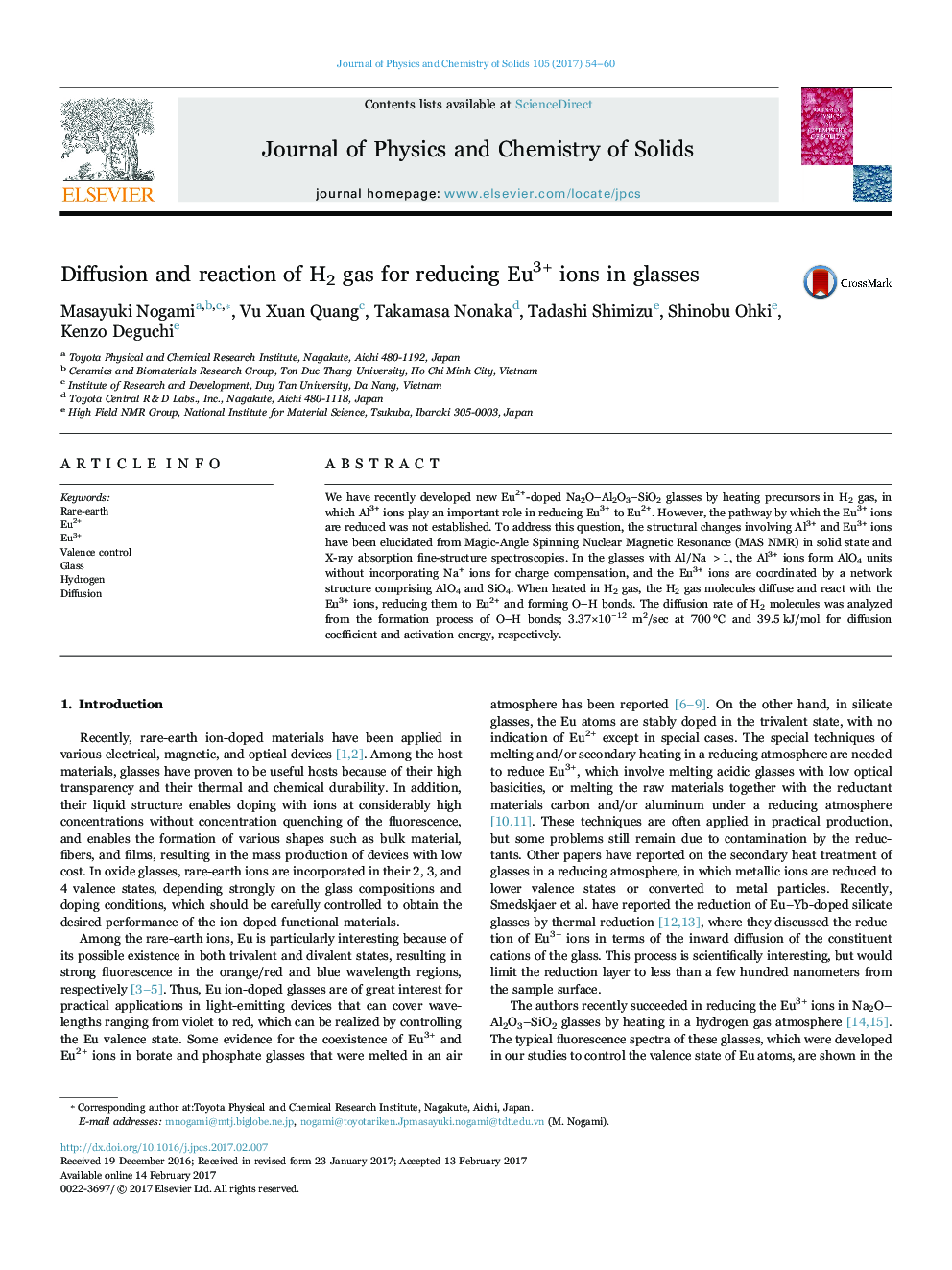| Article ID | Journal | Published Year | Pages | File Type |
|---|---|---|---|---|
| 5447574 | Journal of Physics and Chemistry of Solids | 2017 | 7 Pages |
We have recently developed new Eu2+-doped Na2O-Al2O3-SiO2 glasses by heating precursors in H2 gas, in which Al3+ ions play an important role in reducing Eu3+ to Eu2+. However, the pathway by which the Eu3+ ions are reduced was not established. To address this question, the structural changes involving Al3+ and Eu3+ ions have been elucidated from Magic-Angle Spinning Nuclear Magnetic Resonance (MAS NMR) in solid state and X-ray absorption fine-structure spectroscopies. In the glasses with Al/Na >1, the Al3+ ions form AlO4 units without incorporating Na+ ions for charge compensation, and the Eu3+ ions are coordinated by a network structure comprising AlO4 and SiO4. When heated in H2 gas, the H2 gas molecules diffuse and react with the Eu3+ ions, reducing them to Eu2+ and forming O-H bonds. The diffusion rate of H2 molecules was analyzed from the formation process of O-H bonds; 3.37Ã10â12 m2/sec at 700 °C and 39.5 kJ/mol for diffusion coefficient and activation energy, respectively.
Graphic abstractFluorescence of the well-controlled Eu2+ and Eu3+ ions in aluminosilicate glasses.Eu3+ ions doped in as-prepared glass are reduced to Eu2+ by heating in H2 gas. Fluorescence is changed from red (Eu3+) emission to white/blue (Eu2+) one.Download high-res image (248KB)Download full-size image
